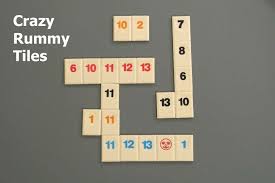Rummy Tiles Rules, also known as Rummikub or Tile Rummy, is a captivating game that combines elements of traditional rummy card games with tile-based play. The game is known for its strategic depth, engaging gameplay, and the joy of arranging tiles into sets and runs. Whether you’re new to the game or looking to refine your understanding, this article provides a comprehensive guide to the rules of Rummy Tiles.
Objective of the Game
The main objective in Rummy Tiles is to be the first player to lay down all of your tiles on the table, forming valid sets or runs. A set consists of three or four tiles of the same number in different colors, while a run consists of three or more consecutive numbers of the same color.
Game Setup
- Tiles: The game includes 106 tiles, consisting of numbers 1 to 13 in four colors (usually black, red, blue, and yellow), and two jokers, which can be used as wild tiles.
- Players: Rummy Tiles can be played by 2 to 4 players. Each player starts with a rack to hold their tiles.
- Starting the Game: Players draw tiles to determine the starting order; the player with the highest tile begins. Each player then draws 14 tiles from the pool and places them on their rack.
Basic Rules
- Drawing and Discarding: Players take turns drawing a tile from the pool or the discard pile and then discarding one tile. The first player to play tiles from their hand and form sets or runs, achieving an initial meld, can do so during their turn.
- Initial Meld: To make an initial meld, a player must lay down a combination of sets and runs worth at least 30 points. Jokers can be used to substitute any tile in the meld, but players cannot lay down just a joker to meet the 30-point requirement.
- Playing on the Board: After the initial meld, players can place additional tiles from their hand onto the board, adding to existing sets or runs or creating new ones. They can also rearrange tiles on the board to form new sets and runs, as long as all tiles are part of valid groups at the end of their turn.
- Jokers: Jokers can replace any tile in a set or run. A joker can be retrieved by a player if they can replace it with the actual tile it represents, either from their hand or by rearranging the tiles on the board.
- Ending the Game: The game ends when a player successfully plays all their tiles. At this point, the other players add up the values of the tiles left on their racks, with jokers typically counting as 30 points. The player with the lowest score wins the game.
Scoring and Winning
- Scoring: The winner is determined by the fewest points accumulated at the end of a set number of games. Points are calculated based on the tiles left on the rack of each player, with the tile values being their face value and jokers being the most valuable.
- Strategy: Effective play in Rummy Tiles involves careful planning and adaptability. Players must consider not only their own sets and runs but also potential moves of their opponents. Holding onto valuable tiles, such as jokers, can be a crucial strategy, but the ability to quickly adapt and meld tiles as the board changes is equally important.
Variations and Tips
- Variations: There are many variations of Rummy Tiles, including different scoring methods, rules for jokers, and initial meld requirements. Some versions also include a timer to speed up play and add pressure.
- Tips for Beginners:
- Focus on forming your initial meld as quickly as possible.
- Observe the tiles other players are discarding to gauge their strategies.
- Use jokers wisely, keeping in mind their high value in scoring.
Conclusion
Rummy Tiles is a game that blends luck and strategy, offering an engaging challenge for players of all skill levels. Its rules are simple enough for beginners to grasp quickly, yet the strategic possibilities provide depth for experienced players. Whether played casually with friends and family or competitively, Rummy Tiles remains a popular and enduring game. Enjoy the challenge of creating the perfect melds, and may the best strategist win!




